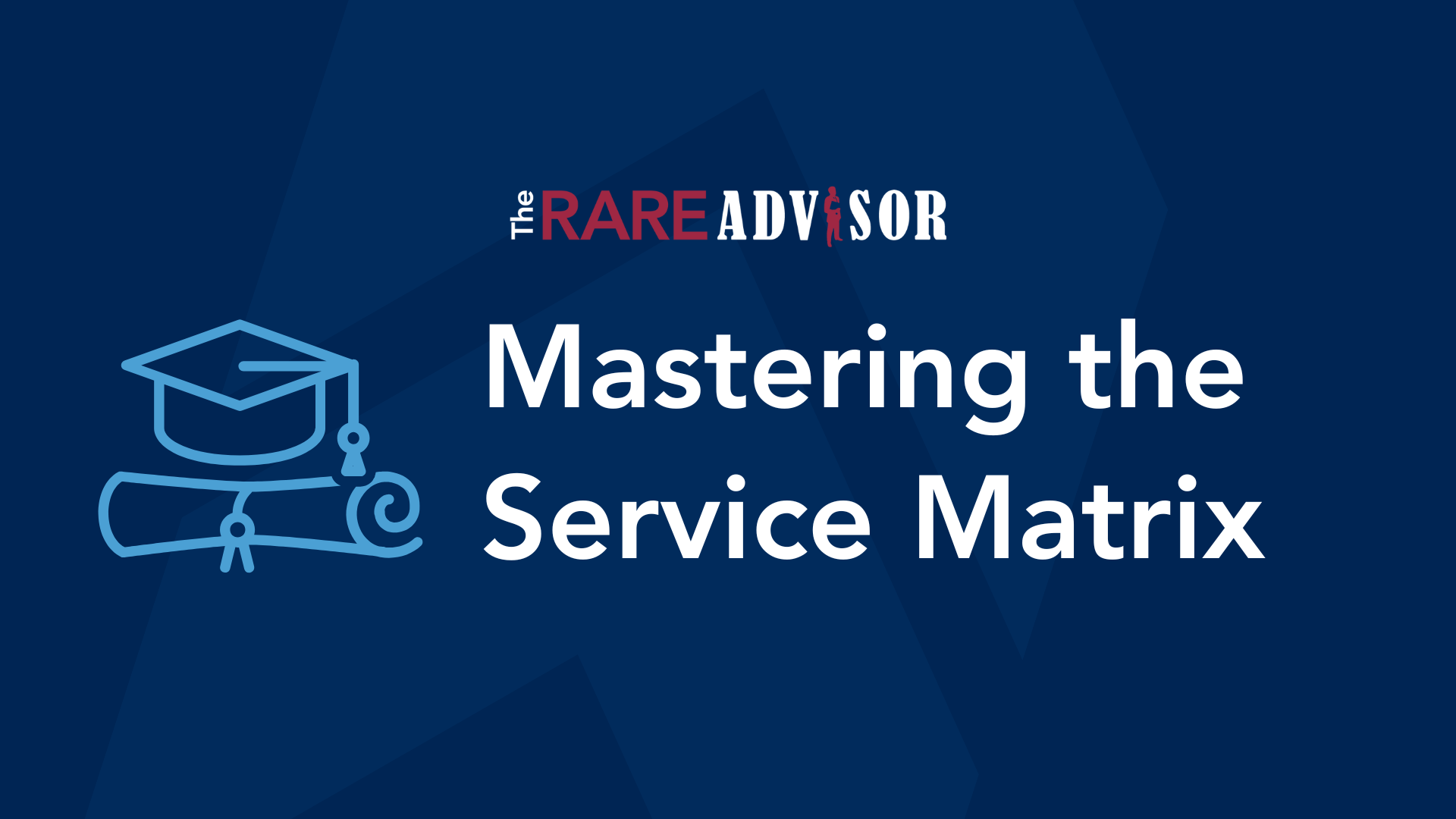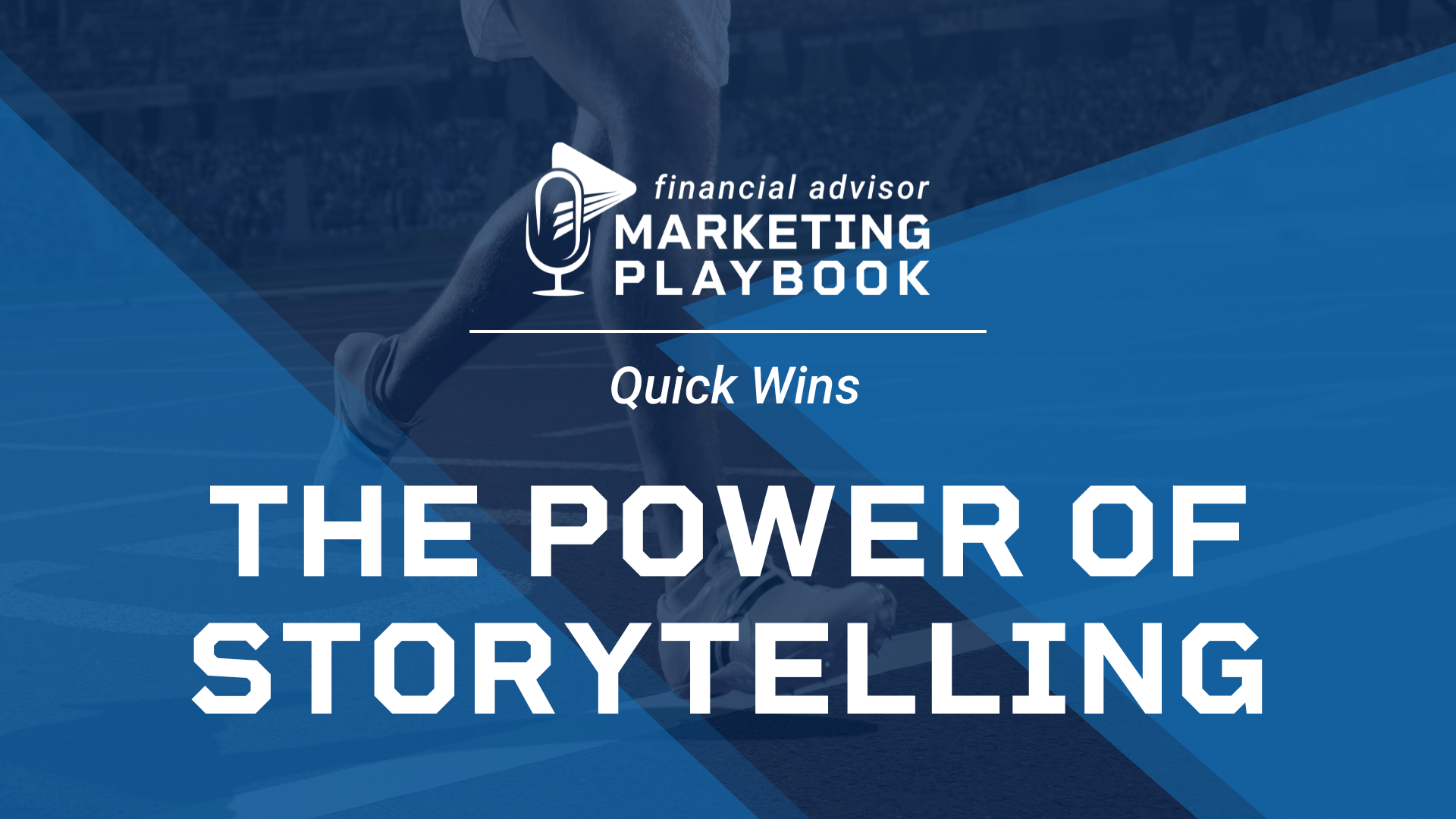The RARE Advisor: Understanding M&A Bogeys

Whether you’re looking to acquire a practice, or you’re looking to sell a practice, you must understand how the bogeys inside the contract work. They can fluctuate, they can move around, and they can easily be used both to your advantage and your disadvantage – you just need to understand how.
Recently, I spoke to two ways you can quickly calculate the valuation of a financial advisory practice. Now, that's a really handy tool, whether you're purchasing an advisory practice or whether you're selling an advisory practice. It's not just for succession and retirement and transition. It's also on the other side of the equation, if you're outgrowing and building your business through acquisitions. But that always then creates the next conversation, which people seem to really get hung up in the weeds on, which is what I call the bogeys. Some people call them bogeys, some people call them thresholds, some people call them floors, but just about every deal out there will have one form of a bogey or another. Now, normally the way a bogey works is the bogey can be on either side of the equation, to protect either the buyer and/or the seller. With the typical bogey, where you see it most often, it's a floor that creates some protection for the seller, but also some protection for the buyer.
So let's just say the bogey is at 90%. What that means is that as long as the value of the practice maintains itself at its current level, or up to 10% in decline (it can't go below 90%), then the payout to the seller will be the full agreed upon payout number. Now, if the valuation were to drop below 90%, then it will go to a pro-rated adjustment. So let's say it goes down to 85%. Well, now the seller is only get going to get 85% of the payments that they normally would have agreed upon. The way that this normally gets calculated is either based on revenue, or assets under management, or number of clientele, or some formula that is agreed upon that combines those things. But just think in terms of revenue, that's the easiest way to do it. If the firm had been running at a million dollars of revenue and now it's running at $920,000 of revenue, well, that's still above the 90% number. So they will still get paid just as if it had been a million dollar deal. But, if it falls down to $850,000 of revenue, then the payments to the seller are going to go pro-rated down to 85% of whatever that number had been.
Now, you can also partake on the upside. So maybe a seller says 'Well, okay, if I can lose it on the downside, then I want to be able to gain it on the upside. And I really want to help you in this transition. And I want to make sure that not only does this business come in play, but we comb through the existing client base, and we identify the assets that maybe I didn't previously get. I'm going to help you get them in the new deal. So, therefore, if the value of the firm increases by over 5%, then I get an increase in the payments as well on a pro-rated basis.' So they can go either way. It depends on if you're a buyer or seller how you might want to negotiate that, but it is important to understand that they all pretty much have these bogeys in the deal.
--
The RARE Advisor is a business model supercharged by Recurring And Repeatable Events. With more than thirty years of working with and coaching successful advisors, host Mike Walters (along with other leaders in the industry), discusses what it takes to grow a successful practice. With the aim of helping financial professionals and financial advisors take their business to the next level, Mike Walters shares insights and success stories that make a real impact. Regardless of the stage of your practice, The RARE Advisor will provide thoughtful guidance, suggestions for developing systems and processes that work, and ideas for creating an authentic experience for your clients.
The RARE Advisor is also a podcast! Subscribe today via Apple Podcasts, Google Podcasts, or your preferred podcast listening service for easier on-the-go listening.
Author Info

Mike Walters is the Chief Executive Officer (CEO) of USA Financial, leading the firm since its inception in 1988. Mike is committed to...
Related Posts

Mastering the Service Matrix: Elevate Client Experience & Drive Advocacy
In this episode of The Rare Advisor, Aaron Grady and Allan Oehrlein dive deep into two essential tools for modern advisory practices: the service matrix and the stewardship framework. Discover why moving from a reactive to a proactive service model is critical for consistency, scalability, and client advocacy. Learn how these frameworks help advisors deliver predictable, high-touch experiences, segment clients effectively, and create professional contrast that sets your firm apart. If you want to elevate your client experience and build loyalty that lasts, this conversation is packed with actionable insights.

Year-End Planning with Purpose: Becoming the Advisor of the Future
In this episode of The RARE Advisor, Aaron Grady and Duncan MacPherson explore how financial advisors can approach year-end planning with intention and purpose. Rather than focusing solely on metrics and spreadsheets, they discuss the importance of aligning your “why” with your process and practice. Drawing on Japanese philosophies like Ikigai, Kaizen, Kintsugi, and Wabi Sabi, they share insights on creating a more meaningful, resilient, and sustainable business. Learn how embracing continuous improvement, authenticity, and technology can help you become the advisor of the future.

The Power of Storytelling: 3 Essential Stories Every Financial Advisor Needs
In this episode of Financial Advisor Marketing Playbook, Mark Mersman reveals how storytelling can transform your marketing and client relationships. Learn the three foundational stories every advisor needs: your origin story to build trust, your client transformation story to demonstrate results and empathy, and your philosophy story to define your beliefs and differentiate your brand. Discover practical tips for crafting these narratives and integrating them into your website, meetings, and marketing strategy.

Mastering the Service Matrix: Elevate Client Experience & Drive Advocacy
In this episode of The Rare Advisor, Aaron Grady and Allan Oehrlein dive deep into two essential tools for modern advisory practices: the service matrix and the stewardship framework. Discover why moving from a reactive to a proactive service model is critical for consistency, scalability, and client advocacy. Learn how these frameworks help advisors deliver predictable, high-touch experiences, segment clients effectively, and create professional contrast that sets your firm apart. If you want to elevate your client experience and build loyalty that lasts, this conversation is packed with actionable insights.

Year-End Planning with Purpose: Becoming the Advisor of the Future
In this episode of The RARE Advisor, Aaron Grady and Duncan MacPherson explore how financial advisors can approach year-end planning with intention and purpose. Rather than focusing solely on metrics and spreadsheets, they discuss the importance of aligning your “why” with your process and practice. Drawing on Japanese philosophies like Ikigai, Kaizen, Kintsugi, and Wabi Sabi, they share insights on creating a more meaningful, resilient, and sustainable business. Learn how embracing continuous improvement, authenticity, and technology can help you become the advisor of the future.

The Power of Storytelling: 3 Essential Stories Every Financial Advisor Needs
In this episode of Financial Advisor Marketing Playbook, Mark Mersman reveals how storytelling can transform your marketing and client relationships. Learn the three foundational stories every advisor needs: your origin story to build trust, your client transformation story to demonstrate results and empathy, and your philosophy story to define your beliefs and differentiate your brand. Discover practical tips for crafting these narratives and integrating them into your website, meetings, and marketing strategy.

